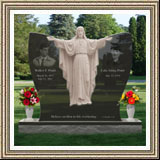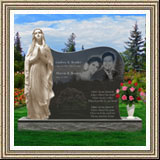At one time, mourning a loved one meant dressing completely in black, including veils, hats and gloves. The rules of expected funeral attire have been altered over the years. The basics will remain the same though there are certain influences and circumstances that will require some occasional adjustments in style.
The traditional black suit and simple dress are very much still considered the best choice. The modern version is a semi-formal look that is just slightly more relaxed. The new normal is a bit more casual and comfortable, incorporating the additional accepted colors of gray and dark blue.
For men, a full suit and tie ensemble is traditional, though the more casual slacks, sport coat and collared golf shirt combination is also acceptable. The main thing is to keep it conservative and always wear black dress shoes. Pant, jacket and tie colors should remain dark with patterns being subdued or not at all.
Women may wear office worthy slacks and dresses in dark colors and conservative styles. The primary rule is not to choose something with a low neckline, high hemline, flashy patterns or bare shoulders because one should not draw attention to herself at these events. Heels are still appropriate though if attending a graveside service, flats may be more comfortable.
Children’s rules are more relaxed. Their clothing is similar to that of the adults in that boys should wear a suit or dress slacks with light colored shirts and ties, dresses for the girls. Though black is not the staple for the young ones, they should stick with darker or neutral hues and the bare minimum of patterns and ruffles.
The traditional basics of funeral attire are always a safe guideline though there will be times when this is not the norm. Many religions and cultural groups have their own expectations as to how mourners should dress, and personalized instructions from the deceased may also change the rules. In those situations, the special style requests should be followed as a show of final respects.





